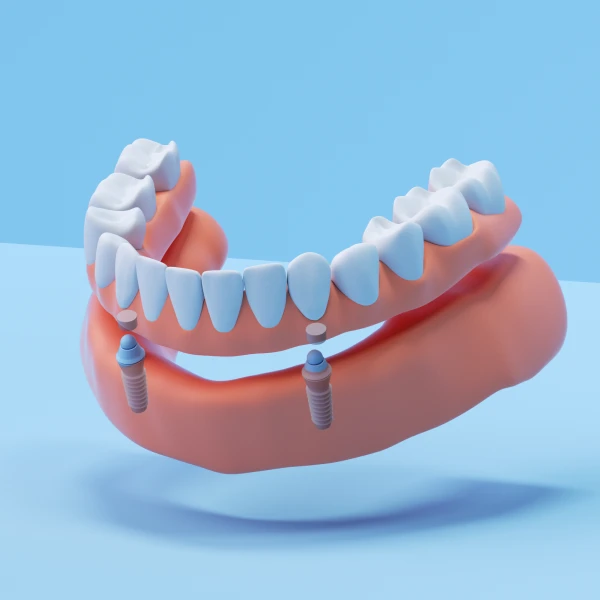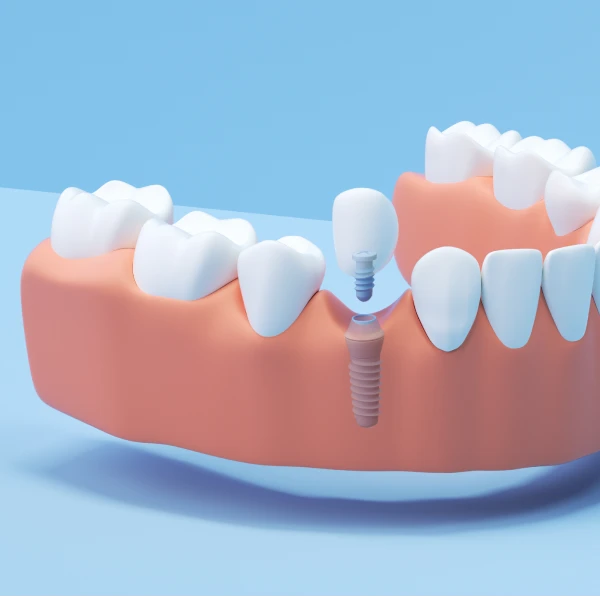Types of dental implants
Discover dental implant solutions designed for your smile.
Plus, a new patient offer below.
Different types of dental implants
From a single tooth to your entire smile, dental implants are the leading solution for restoring missing teeth. Known as the patient-preferred solution, 84% of patients wish they started with implants vs. dentures¹.
Full mouth restoration

Implant denture
Secure your smile with a premium denture that attaches to fixed implants.
Fixed full arch implants
Transform your entire smile with a fixed, full row of permanent teeth.Partial smile restoration

Single tooth implant
Restore a missing tooth with one natural-looking and feeling implant.
Implant-supported bridge
Replace 2 or more adjacent teeth with long-lasting implants and a bridge.
Find your implant solution
When you get started with our leading implant team, we’ll help you find which solution is best for you with a new patient implant consult—for free without insurance².
²For new patients that do not have dental insurance. New patients must be 21 or older to receive free exam and X-rays, a minimum $80 value; the value of the savings will vary based on doctor recommendation....More
Designed with you in mind
The closest thing to your natural teeth, restoring your smile with dental implants is the beginning of a new you.
Affordable
Save money over time with dental implants. Get yours covered by most insurance providers, third-party financing or both. We do not accept Medicaid.
Made for you
As the most natural-looking and feeing solution for restoring your smile, dental implants are designed for you.
All under one roof
One team, one provider, one office—everything your smile needs in one convenient place.
Discover more smile solutions
Want to shop around? We get it. Discover alternative smile replacement solutions with our denture services and packages.
Learn more about the different types of dental implants
What types of dental implants are there?
The most common type of implants are endosteal implants. Depending on what your dental needs are, your implant team may recommend subperiosteal implants or zygomatic implants. Your team of implant providers will walk you through which solution is best for you.
Does Aspen Dental offer All-on-four dental implants?
All-on-four is a trade-marked version of an Aspen Dental fixed full arch solution that replaces missing teeth on your top or bottom arch. With Aspen Dental dental implants, you’ll get the same level of implant success rate, bite improvement and patient satisfaction so you have peace of mind in your smile.
Do I have to have surgery to get dental implants?
Yes. No matter what type of dental implant you’re recommended, your dental implant procedure will include oral surgery as it’s necessary to insert and secure the dental implant(s) into your new smile. As always, your Aspen Dental care team will be with you every step of the way to ensure your as comfortable as possible during the process.
How do I know which dental implant is best for me?
While it’s best to work with your local Aspen Dental’s team of implant providers to find the right type for you, you can compare your options to see which may be best for you based on your current oral health.
Endosteal implants
Why they work: The most common type of dental implants, endosteal implants are always durable and can last a lifetime
Placement details: A small titanium post is placed your jaw to secure a crown (artificial tooth), implant bridge, snap-on denture or fixed full arch, so these are typically recommended for patients whose jaws are healthy and able to support a dental implant naturally
Requirements: May require a bone graft if the jaw is too thin or soft to support a dental implant
Recovery: Typically between 3-4 months to allow the jaw to heal in between steps
Zygomatic implants
Why they work: An advanced procedure, zygomatic implants may be used for implants placed in the upper jaw when there is severe bone loss
Placement details: These dental implants are placed into the cheek bone due to a minimal jaw bone viability
Requirements: No bone grafting is required for this implant solution
Recovery: The procedure can be completed in one day but can be more complicated than other dental implant options because of the placement location
Subperiosteal implants
Why they work: A less common solution for the lower jaw only, subperiosteal implants are used for patients who don’t have enough jawbone to support endosteal implants
Placement details: These dental implants are placed under the gum but above the jaw
Requirements: No bone grafting is required for this implant solution
Recovery: While less stable than endosteal implants, these implants have a quicker recovery time
